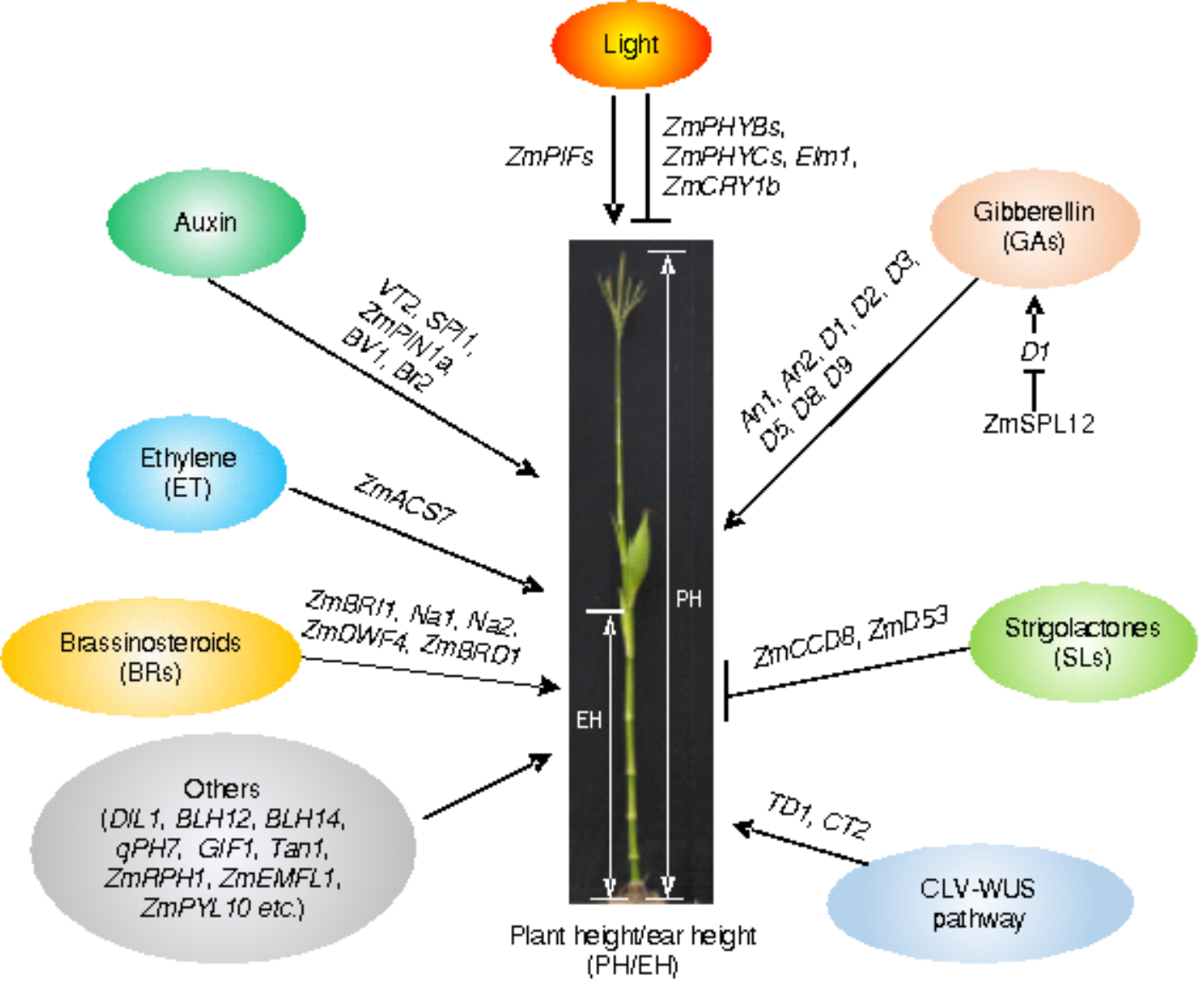Recently, Biotechnology Research Institute, Chinese Academy of Agricultural Sciences (BRI-CAAS), in collaboration with South China Agricultural University (SCAU), summarize recent advances in deciphering the genetic basis of maize involved in response to high-density planting, and provide some strategies for breeding maize of ideal plant architecture with high-density planting tolerance. The work, entitled “Breeding maize of ideal plant architecture for high-density planting tolerance through modulating shade avoidance response and beyond”, was published in Journal of Integrative Plant Biology on Dec. 22 2023.
Maize is the largest crop and is of great importance for ensuring food security in China. High-density planting is crucial for the increase of maize yield. However, high planting density usually triggers a shade avoidance response and causes increased plant height/ear height, reduced resistance to abiotic and biotic stresses, increased risks of lodging, resulting in yield loss. Deciphering the genetic and molecular mechanisms of maize involved in response to high-density planting is very important for breeding advanced maize cultivars with superior performance under high-density planting conditions.
In this paper, research progress of genetic regulation molecular mechanism of maize in response to high-density planting was systematically reviewed from six aspects including light signal, plant height/ear height, leaf angle, tassel branch number, flowering date, and root structure. The reduced plant height/ear height, more erect leaf angle, reduced tassel branch number, earlier flowering, and strong root system architecture are five key morphological traits required for maize adaption to high-density planting. The work also provides some ideas and suggestions for cultivating high-yield maize with high-density planting tolerance. To realize the collaborative improvement of high-density planting tolerance trait and other elite agronomic traits, efforts should be made todecipher the genetic and molecular mechanisms, to identify superior alleles existing innatural populations and create artificial elite alleles de novo, in combination with modern biotechnological approaches such as molecular-assisted breeding and genomic selection.
Ph.D student Fereshteh Jafari and professorBaobao Wangfrom BRI-CAAS are co-first authors for this work.Professor Haiyang Wang from SCAU and associate professor Junjie Zou from BRI-CAAS are the corresponding authors. This work was supported by grants from the National Key Research and Development Program of China (2021YFF1000301), the National Natural Science Foundation of China (32022065, 32272189, and 32130077), the Hainan Yazhou Bay Seed Lab (B21HJ8101), the Agricultural Science and Technology Innovation Program of the Chinese Academy of Agricultural Sciences, the Central Public‐Interest Scientific Institution Basal Research Fund, and Chinese Scholarship Council (CSC).
More details can be found at the link: https://doi.org/10.1111/jipb.13603

Figure. Genetic pathways regulating plant height and ear height in maize |